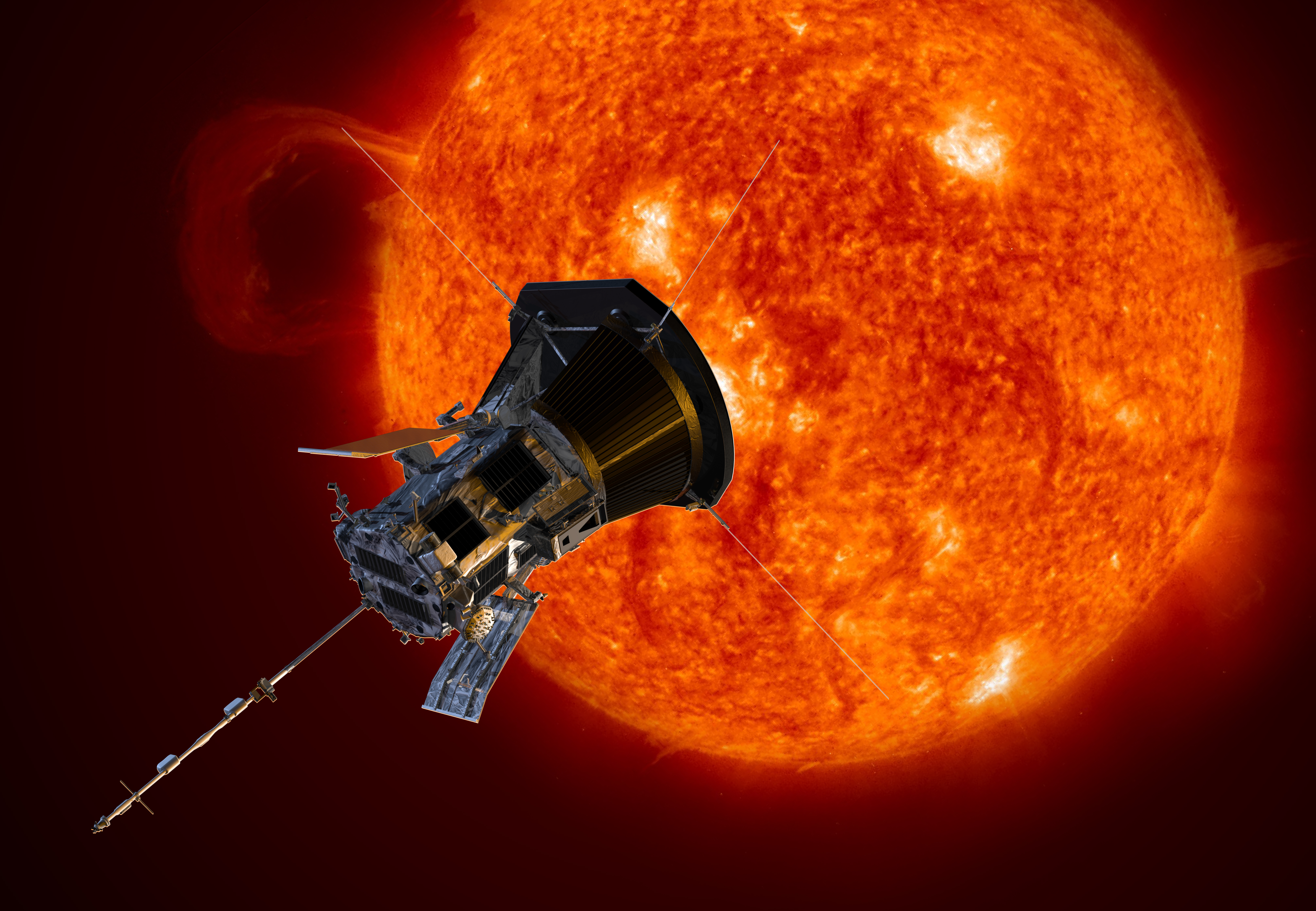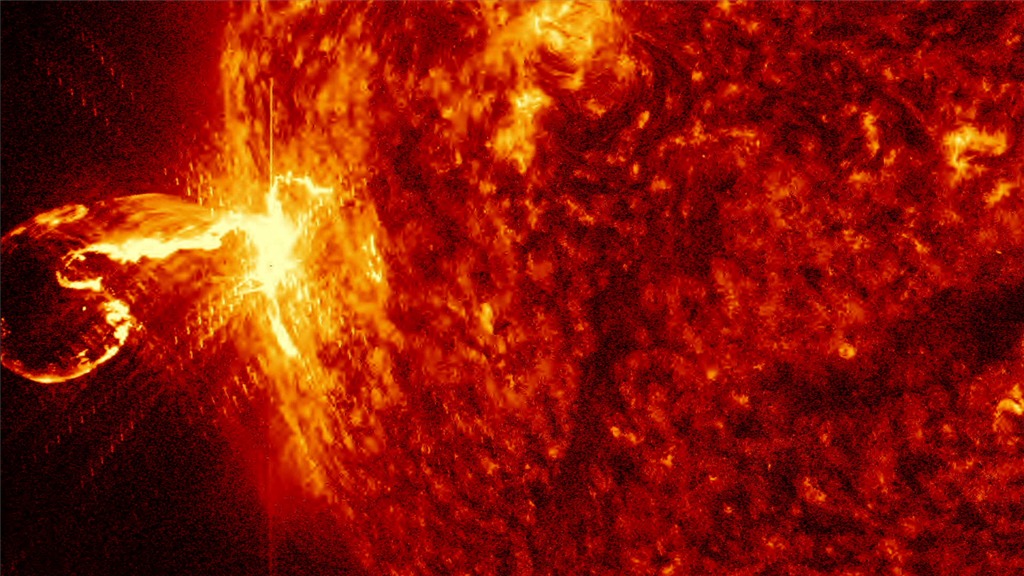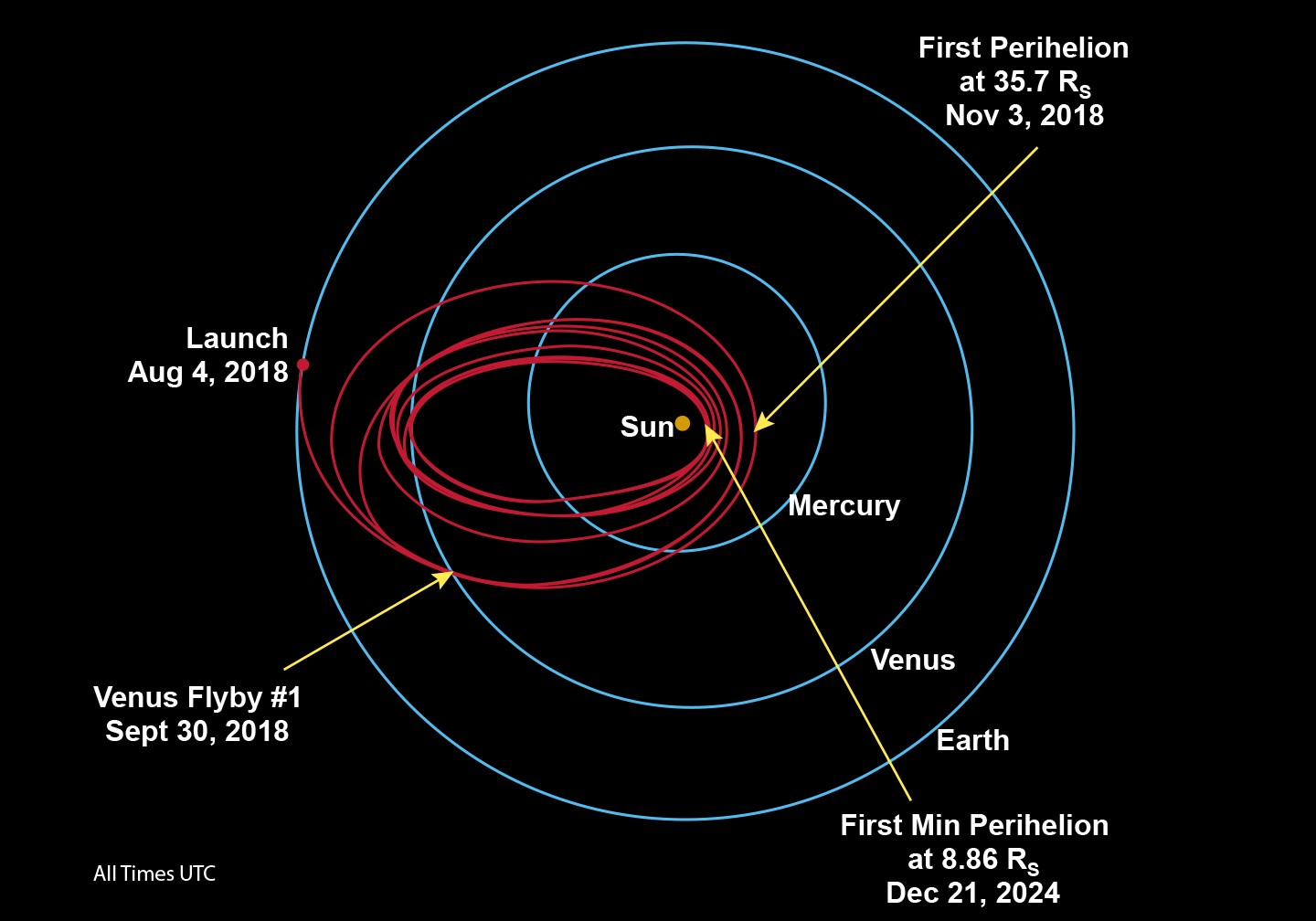In the early hours of 12 August, a Delta IV-Heavy rocket blasted off from Cape Canaveral in Florida carrying the most ambitious solar space mission ever to be attempted – NASA’s Parker Solar Probe.
The launch marks the beginning of a seven-year mission that will take Parker closer to the Sun than any spacecraft before, flying into the Sun’s corona and bringing a wealth of new information about our local star.
Parker is a mission almost 30 years in the making. It was back in 1990 that scientists at NASA first began to discuss sending a probe to the Sun. The team have had to overcome enormous technical challenges as well as cancellations, delays and budget issues to finally be at a point where they can deliver this once in a generation mission. There are sure to be some very nervous people watching Saturday morning as their precious spacecraft gets blasted into space on top of tens of thousands of tons of highly explosive rocket fuel.

Despite being the largest and brightest object in the sky, there is still a lot we don’t understand about our Sun. Why does the corona – the ghostly halo of light that becomes visible around the Sun during a total eclipse – have a temperature of millions of degrees Celsius when the surface of the Sun is at only 5730 degrees? How is the solar wind – the stream of charged particles that constantly buffets the Earth – accelerated into space?
Perhaps the most significant issue that Parker will help to address is the threat posed to human activity by solar storms. Despite its tranquil appearance from the surface of the Earth, the Sun is a dynamic and often violent body, sporadically firing vast clouds of charged particles into space.
These ‘coronal mass ejections’ have the power to knock out satellites and power grids, if we were unlucky enough for one to hit the Earth. Improving our understanding of these solar storms is essential in predicting when they might occur and in giving more warning of an impending storm to the people who run our power, transport and communications networks. Parker will measure the origins of these solar storms right at source, providing crucial data.
In fact, forecasting solar storms is something you can get involved in. The Science Museum recently launched a new citizen science project with solar scientists at the University of Reading. If you follow this link to the Zooniverse site, you can help scientists decide which coronal mass ejections look the most dangerous and ultimately improve our ability to predict and forecast space weather.

The engineering challenges faced by the Parker team have been enormous. The spacecraft will fly closer to the Sun than any before, coming within 4% of the distance between the Earth and the Sun. At such close quarters the intense sunlight will heat Parker to a searing 1377 degrees Celsius, hot enough to melt steel.
If Parker’s delicate instruments were exposed to this fearsome light they would be destroyed instantly, and so the entire spacecraft is hunkered down behind a super-advanced heat shield made of a carbon-carbon composite, which will keep the rest of the spacecraft at a balmy 29 degrees Celsius.
In fact, Parker will come so close to the Sun that it can’t carry any telescopes that look directly at the Sun – they would melt! Instead, instruments behind the heat shield will measure and sample the particles in the solar wind and the magnetic field, while a specially designed telescope will look sideways out of the craft to image the solar wind as it flows away from the Sun.
Saturday marks the beginning of a long journey that will take Parker ever closer to our nearest star. While most spacecraft try to increase their speed to escape the Sun’s gravity, Parker actually needs to slow itself down compared to the Earth so that the Sun’s gravity can take hold and pull Parker in. In late September, Parker will fly past Venus, and use the planet’s gravity to slow down the speed of its orbit. From here, Parker will literally fall towards the Sun, making its first closest approach on 3 November.
This first flyby of the Sun, or ‘perihelion’, will be a real moment of drama for the mission team, who will be waiting expectantly for the first data to be returned from close to the Sun (and also to see if their spacecraft survives the encounter). Over the next seven years, Parker will use flybys of Venus to repeatedly fall further and further towards the Sun, reaching its closest approach on 21 December 2024.

At this point, the Sun’s gravitational pull will have accelerated Parker to a whopping 700,000 kilometres per hour – that’s fast enough to travel from London to Manchester in one second – making Parker the fastest manmade object in history.
The launch of the Parker Solar Probe marks the beginning of an exciting new chapter in our exploration of the Sun. Following hot on its heels in early 2020 will be the European Space Agency’s Solar Orbiter, which will carry a suite of telescopes to provide stunning new imagery of the Sun as the spacecraft soars high above the plane of the Solar System to view its north and south poles. Solar Orbiter will work in tandem with the Parker Solar Probe to transform our understanding of our local star, as humankind reaches out to touch the Sun for the very first time.
Learn more about humanity’s relationship with our nearest star in this blog series, based on our recent exhibition The Sun: Living With Our Star.
You can take part in our citizen science project and help save the world from solar storms here.
Find out more about the Sun and space weather on the Science Museum website.